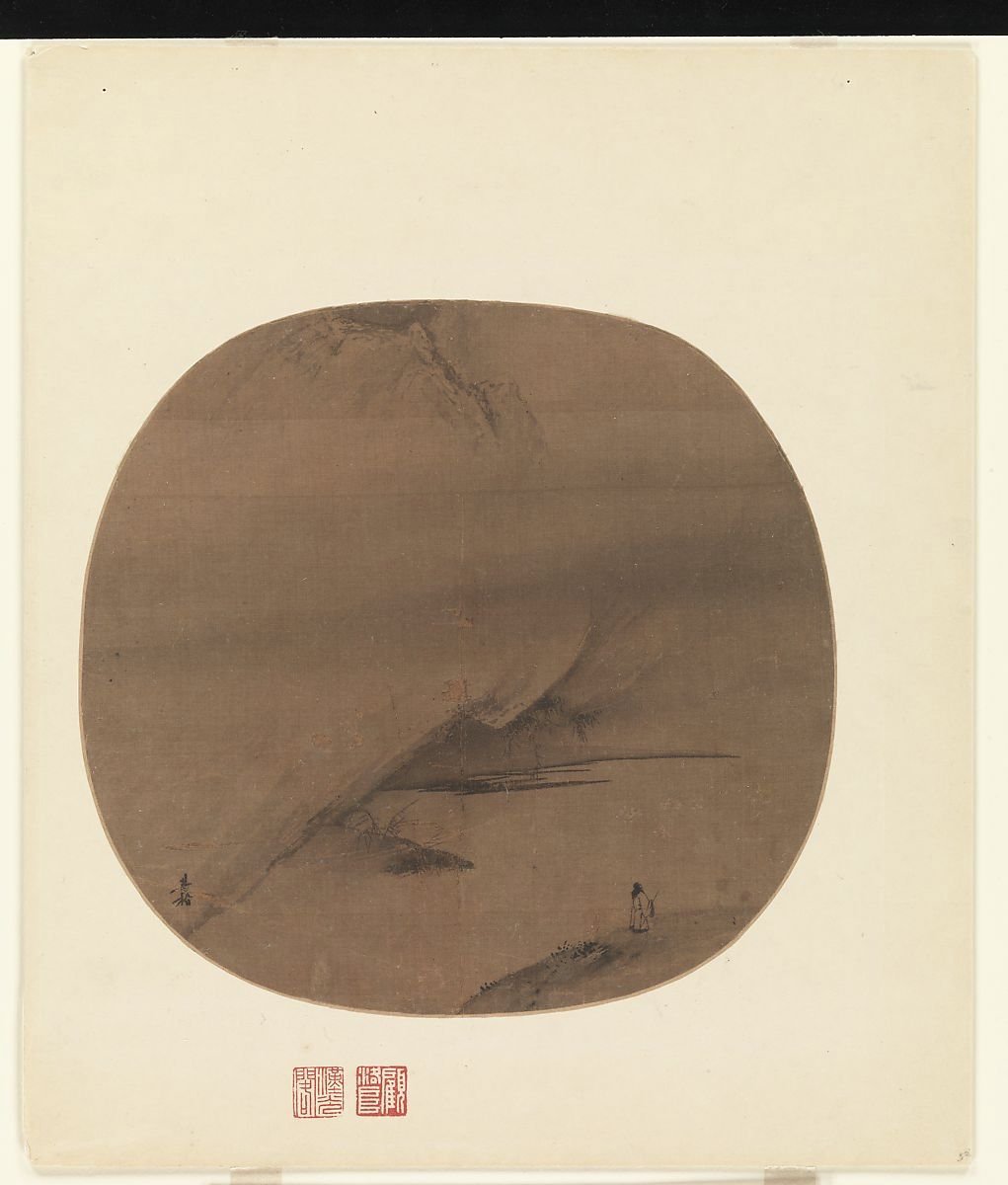studies
‘Poet Strolling by a Marshy Bank’
Liang Kai
early 13th century
My Inner Landscapes collection of 2020 lay the pathway into a body of work which expresses my state of mind and journey into meditation, in parallel to the landscape of North Cornwall and movement along its coastline. ‘Deep Distance’ (1.) is a piece of work which, as with the traditional zazen meditation and calligraphy I have studied, was approached with an acute focus. The concentrated gestures became a meditation themselves. They focus on the quality of the brushed line, and the line reflects the state of my mind. Each inconsistency is a moment of distraction, every mark a reflection of my mood - agitated, peaceful, longing, content.
These ‘Deep Distance’ drawings were greatly inspired by the compositional theories of the Northern and Southern Song Dynasties. Artists including Guo Xi*, Ma Yuan*, Yan Ciyu*, created empty and atmospheric worlds; textured landscapes emerging and receding into ink washes and blurry surfaces. The differing compositions reflected those of the ‘Level Distance’ (pingyuan); a view across a lowland expanse, ‘High Distance’ (gaoyuan); a view of towering mountains, and ‘Deep Distance’ (shenyuan), a view through and beyond mountains into the distance. The space within these ‘Deep Distance’ paintings is amplified by the contrast of close and far. Framed by the mountain textures, the expanse extends further, and the psychological experience of this distance becomes that of uncertainty, illusion and contemplation.
‘Poet strolling by a marshy bank’ by Liang Kai (2. + 3.) is one of the most disorientating compositions in Chinese art. The view of the extending landscape is cut across by a looming cliff, which itself dissolves into a misty wash of ink. This interruption to the vista challenges our perception and becomes a metaphor for reality and the illusory nature of existence.
And so, inspired by these works, elements of disruption and distortion entered the composition of my prints, primarily the use of heavy black brush-stokes across the image. Theses dense stokes resembled the form of the Cornish coastline, but also became my metaphor for inhibiting states of mind and feelings. They interrupt and juxtapose the mindful mark making which lies beyond, as limiting beliefs and distractions inhibit our progress towards self-actualisation or tranquility. The space is split between a here and there, discipline and disorder.
My ‘Deep Distance’ works are a personal exploration of distance, desire and acceptance. As I transition through my 30s, changing careers, expanding spheres of study and deepening relationships, I have felt confronted by the choices which bought me here, now, and the ever extending possibility of where I want to be, who I want to be. There have been times I felt too boundaried by my own way of being and thinking. Inhibited by my history, which has shaped my inner landscape and my ‘mental mountain range’. Seeking change in myself through self-awareness, study and zazen, I am challenged by and encouraged beyond these thought patterns and behaviours.
Zazen Meditation is like the painting ‘Poet strolling by a marshy bank’. Our sense of Selves become obstructed, distorted and dissolved through the practice of self-reflection. As we move deeper into our inner worlds, our perspectives shift and contort like the mountain landscape Liang Kai drew.
*Guo Xie, c. 1020 – 1090, Northern Song, discover more here. *Ma Yuan, c. 1160–65 – 1225, Southern Song, discover more here. *Xia Giu, ca. 1195 - 1230, Southern Song, discover more here.
Insight into the traditions of ‘distance paintings’ taken from ‘How to Read Chinese Paintings’ written by Maxwell K. Hearn, published by The Metropolitan Museum of Art and Yale University Press, 2008.


